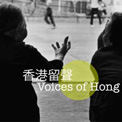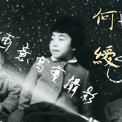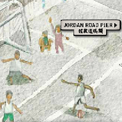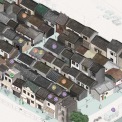Between 1950s and 1970s, resettlement housing was the most dominant type of public housing in terms of the number of units built and the number of people housed. The facilities provided in this type of housing differed according to the stages of development, and were differentiated by various Marks.
Resettlement housing, which was directly financed by government revenue, was first provided to cater the needs of over 50,000 squatters made homeless by a squatter fire in Shek Kip Mei in 1953. It had subsequently been provided for the rehousing of squatters cleared from land for development. It is worth noting that financial consideration was a main factor in constructing the early resettlement blocks, as stated in the 1954-55 Annual Report of the Resettlement Department:
“…it was calculated that a permanent six-storey building capable of housing well over 2,000 persons could be built for the amount which was being spent every fortnight during the spring of 1954, on supplying free food to the victims of the Shek Kip Mei fire.”
In 1964, with the issue by the government of a White Paper entitled Review of Policies for Squatter Control, Resettlement and Government Low-Cost Housing, eligibility rules for resettlement were set out, the list of priorities being:
1. former domestic tenants of buildings demolished as dangerous;
2. special compassionate cases and certain victims of natural disasters;
3. the resent occupants of cottage resettlement areas or resite areas needed for transit centres or permanent development;
4. people presently occupying tolerated structures on Crown land required for development;
5. the tenants of overcrowded resettlement rooms; and
6. pavement dwellers occupying tolerated structures.
Resettlement housing, which was directly financed by government revenue, was first provided to cater the needs of over 50,000 squatters made homeless by a squatter fire in Shek Kip Mei in 1953. It had subsequently been provided for the rehousing of squatters cleared from land for development. It is worth noting that financial consideration was a main factor in constructing the early resettlement blocks, as stated in the 1954-55 Annual Report of the Resettlement Department:
“…it was calculated that a permanent six-storey building capable of housing well over 2,000 persons could be built for the amount which was being spent every fortnight during the spring of 1954, on supplying free food to the victims of the Shek Kip Mei fire.”
In 1964, with the issue by the government of a White Paper entitled Review of Policies for Squatter Control, Resettlement and Government Low-Cost Housing, eligibility rules for resettlement were set out, the list of priorities being:
1. former domestic tenants of buildings demolished as dangerous;
2. special compassionate cases and certain victims of natural disasters;
3. the resent occupants of cottage resettlement areas or resite areas needed for transit centres or permanent development;
4. people presently occupying tolerated structures on Crown land required for development;
5. the tenants of overcrowded resettlement rooms; and
6. pavement dwellers occupying tolerated structures.





